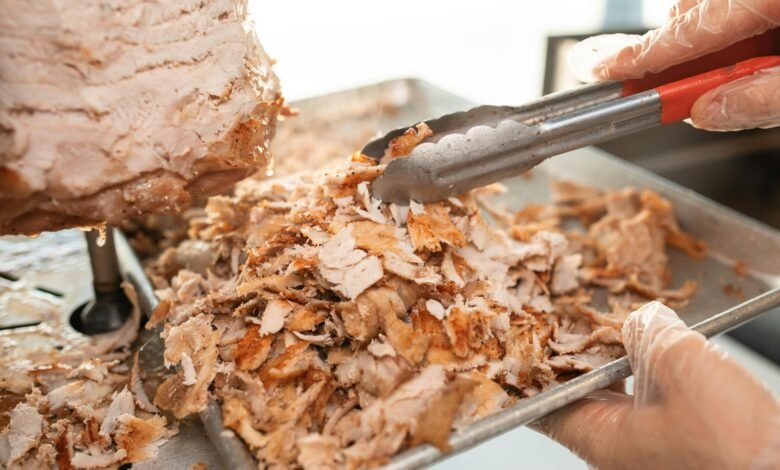Warning! Skyrocketing Beef Prices in the US Soon – What You Need to Know!

Prepare for Rising Beef Prices in the United States
The American beef market, a cornerstone of American cuisine and culture, is preparing for a significant shift. With projections indicating an increase in beef prices due to various factors affecting supply and demand, it is essential for consumers, farmers, and industry stakeholders to understand the forces at play. This blog delves into the reasons behind the anticipated price hikes and what they mean for consumers.
Understanding the Beef Market
Beef has long been a staple in American households, cherished for its versatility in cooking and rich flavor. However, the beef market is not exempt from the ebbs and flows of economic trends. Prices are primarily influenced by production levels, consumer demand, and external environmental factors.
In recent years, fluctuations in beef prices have posed challenges for both consumers and producers. Farmers and ranchers face increased costs of feed, labor, and shipping, while consumers experience the impact of these costs on grocery bills. As the United States navigates changes in the beef supply, understanding the factors behind price increases is crucial for all stakeholders.
Key Factors Contributing to Higher Beef Prices
1. Declining Cattle Supply
One of the most prominent factors contributing to rising beef prices is the ongoing decline in cattle supply. Factors such as drought, rising feed costs, and challenges in breeding have led to fewer cattle entering the market. For instance, severe weather patterns and prolonged droughts have made it increasingly challenging for ranchers to maintain their herds. With less cattle available for processing, the reduced supply inevitably drives up prices.
2. Increased Feed Costs
The cost of feed plays a significant role in the pricing of beef. As grain and forage prices continue to rise due to global supply chain disruptions and climate-related factors, ranchers face increased costs in raising their cattle. Farmers’ margins are squeezed as they must spend more to produce the same amount of beef. When production costs escalate, these expenses are generally passed on to the consumer, leading to higher prices in grocery stores.
3. Labor Shortages
Labor shortages have emerged as another critical issue affecting the beef industry. Processing plants, which play a vital role in the supply chain, have suffered from workforce shortages exacerbated by the COVID-19 pandemic. This not only hampers the speed at which cattle can be processed but also contributes to inefficiencies throughout the supply chain. As a result, decreased processing capacity can lead to increased prices for consumers.
4. Rising Demand for Beef
On the demand side, the appetite for beef remains robust. Consumers in the U.S. continue to enjoy beef as a primary protein source. Additionally, growing global markets are increasingly looking toward U.S. beef, driven by shifts in dietary preferences and an expanding middle class in developing countries. This surge in demand, coupled with limited supply, creates an imbalance that further drives up prices.
5. Impact of Inflation
Inflation is a broader economic factor that cannot be overlooked. The rising cost of goods and services across the board contributes to the overall inflation rate, influencing how much consumers are willing to spend on beef and other essentials. With inflation rates remaining high, consumers may see fluctuating prices at the checkout line as producers adjust their pricing strategies to remain viable while navigating increasing operational costs.
Future Outlook for Consumers and Producers
As we look ahead, industry analysts predict that beef prices are set to climb throughout the coming years, with expectations that prices will reach new heights in 2026. For consumers, this means adjusting budgets and potentially reevaluating meal planning strategies. For producers, it presents both challenges and opportunities—those who can adapt quickly to changes in market conditions may thrive, while others may need to rethink traditional practices.
Ranchers and farmers must be proactive in addressing issues like feed sourcing, herd management, and operational efficiency. Furthermore, adopting innovative agricultural practices and technology can help in mitigating some of the impact of these challenges. The more prepared producers are to navigate these turbulent waters, the better they can weather the impending price increases and maintain profitability.
Consumer Strategies Amid Rising Prices
For consumers facing the forecasted rise in beef costs, there are several strategies to consider. Adapting shopping habits can minimize financial strain while still allowing enjoyment of beef as a dietary staple.
1. Explore Alternative Proteins
With beef prices set to rise, exploring alternative protein sources such as chicken, pork, and plant-based options can be an effective way to maintain a balanced diet without the rising costs. Incorporating a mix of proteins can also diversify family meals.
2. Buy In Bulk
Purchasing beef in bulk can lead to significant savings. Families can collaborate with others to buy larger quantities, which often come at a lower per-pound cost. Proper storage techniques, such as freezing, can help preserve the meat for future use.
3. Seek Out Local Sources
Exploring local farms and farmers’ markets can present opportunities for consumers to purchase beef directly from producers. Not only does this support local economies, but it may also allow consumers to secure better pricing compared to retail markets.
4. Plan Meals Wisely
Meal planning can help reduce waste and make better use of the available budget. Prioritizing recipes that utilize less expensive cuts of beef can stretch resources further while still providing a satisfying meal.
Conclusion: Embrace Change in the Beef Landscape
As we prepare for an uncertain economic landscape in the beef industry, both producers and consumers must adapt to the forecasted changes. The anticipated rise in beef prices is a multifaceted issue driven by declining supply, increased demand, and various economic pressures. By staying informed and making informed choices, stakeholders can navigate these changes effectively.
Summary of Key Points
- Declining cattle supply due to factors such as drought and feed costs is driving prices higher.
- Increased feed costs are causing ranchers to face tighter margins, resulting in higher consumer prices.
- Labor shortages in processing plants are contributing to inefficiencies in the supply chain.
- Rising demand for beef, both domestically and globally, exacerbates shortages.
- Inflationary pressures are influencing the overall cost of goods, including beef.
- Consumers can consider alternative proteins, buying in bulk, and meal planning to cope with the anticipated price increases.





